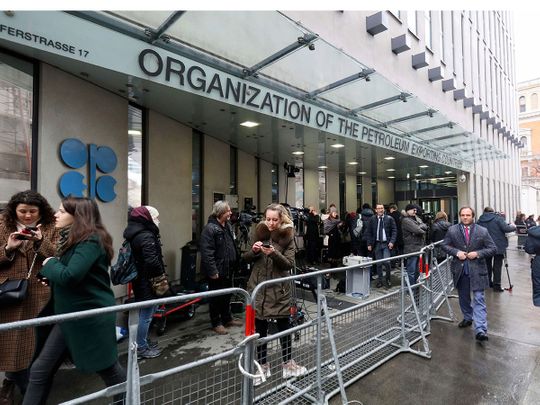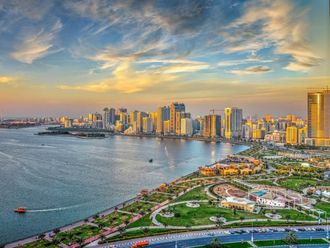
Abu Dhabi: Opec+ members on Wednesday agreed to start easing off on historic production cuts, with cuts now set to drop down to 7.7 million barrels per day (bpd) as demand goes up.
The reduction in cuts comes in line with the group’s own phased strategy, which aims to gradually reduce the level of production cuts over time and in relation to oil markets.
Despite the official headcount coming down to 7.7 million bpd during August, the number of production cuts will still be above 8 million as producing states that failed to meet their cuts in May and June will have to compensate over the next months.
“We are acting collectively with unity and discipline as we are seeing results,” said Prince Abdul Aziz Bin Salman, Saudi minister of energy and chairman of the meeting. “On the demand side we are seeing encouraging signs of improvement [as] economies around the world are opening,” he added.
The minister also noted that most of the new production would be consumed in domestic markets due to heightened demand, and would not add significantly to oil exports.
“As we move to the next phase of the agreement, the extra supply resulting from the scheduled easing of production cuts will be consumed as demand continues on its recovery part.
“In many Opec+ countries there will be an increase in demand for utilities as well as changes in travel patterns, posting a domestic demand for gasoline and diesel,” he added. “So despite a higher production target in August, there will be no change in our exports.”
For his part, Russian energy minister Alexander Novak, emphasised the need for producing members to ensure their strict compliance with their agreed production cuts.
“It is now more important than ever to strictly adhere to the agreement of participating countries in our joint cooperation,” Novak said.
“Moving on to the next stage of the agreement does not cancel the obligations of countries that have committed to compensating for overproduced volumes,” he added.
Oil prices also continued to trade in the low $40 range in the late afternoon hours of the UAE, with prices having largely found themselves in a stable position over the last few weeks, in large part due to Opec+ cuts since May.
“During 3Q20 (third quarter 2020), global crude demand is expected to rebound by 7.1 million bpd compared to 2Q20, and thus we expect balances to show sizable deficits during 3Q20, even as Opec+ increases production by about 2 million bpd,” noted Paola Rodriguez-Masiu, senior oil markets analyst at Rystad Energy.
“For now, we believe that the oil market is heading to the right direction, with oil prices registering moderate gains,” she added.
“The price recovery is fragile and hinges not only upon avoiding a derailing of the demand recovery, but also OPEC+ adherence to quotas as they slowly ramp-up output in August.”








